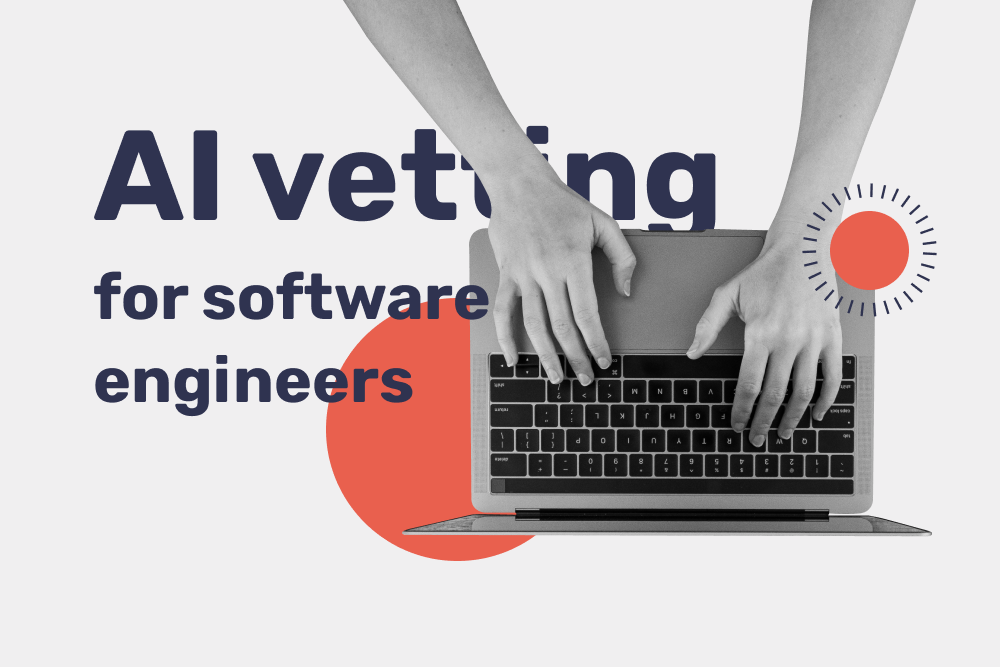In 2021 alone, US startups created 3 million new jobs. Sounds great, but filling all these opportunities is very more challenging. Hiring for a startup is tiresome, especially when we talk about recruiting tech talent. The tech talent shortage, economic recession, and the Great Resignation aren’t the only challenges you are likely to face – when hiring for a startup, you have to ensure a perfect cultural fit, in addition to a skill set match.
In this article, Bridge experts are going to talk about common startup hiring challenges and the proven ways to deal with them.
Common tech startups hiring challenges and how you can solve them
So, your startup has recently reached a new high, and now you have to hire a team to help it grow further. To make this process effective and simpler at once, keep in mind the main recruitment difficulties most startups face when hiring new employees. Our technical talent sourcer, Anastasia Shevtsova, shares the most common ones:
- Potential employees find it hard to believe in the product’s success.
- Startups have not enough money to keep up with hiring new employees.
- Finding someone who is able to develop the direction where the startup is going is challenging, too.
- It would be hard to find someone who’s open to overwork and is flexible in their career.
- When the company is big, you can hire someone not a culturally fit but can do their job well, startups can’t do that.
- Senior-level candidates are more likely to choose a more stable company.
Below, we are going to overview these and other challenges in the recruitment process tech startups face and provide solutions for them.
Defining the roles and responsibilities
Since you have to build a product from scratch, you may find it difficult to decide which specialist you need in the first place. You may feel overwhelmed thinking about whether you have to build a website, mobile app, or both, which of the tasks should come first, and what specific specialist you have to hire right now.
✔Solution:
- Define clear roles and align them with your product development stages. Usually, hiring a front and back-end developer (or one full-stack developer as an option), a designer, and a tester to get started. After launching an MVP, you will also have to hire a marketing team.
- Hire on-demand. Hire the team members you need step-by-step to stay focused on the highest-priority roles and keep track of your hiring budget better.
No clear requirements for the roles
After you are done with clarifying the roles, you have to come up with concrete requirements per each. And this is the challenge both mature and newly-created companies face. Since the business environment can never be 100% certain, defining the candidate requirements with future business growth projections in mind becomes even more challenging. Here is how you can facilitate this task.
✔Solution:
- Research the job ads from the companies in your niche. Use the job ads posted by other companies as a starting point to gather technical requirements, develop your tone of voice in your job ad, and evaluate the competition.
- List the technical skills you need for each role. At this stage, you are likely to have a clear idea of what technologies your tech product will be built with and what tools you have to use for the design, development, and testing.
- List soft skills. The soft skills startups will be interested in go beyond the ones mature projects usually list in their job ads. In addition to communication, collaboration, analytical and creative thinking, such skills are flexibility and readiness to go the extra mile. The clearer you define both technical and non-technical requirements for your candidates, the fewer challenges in the recruitment and selection process you are likely to face.
Hiring tech talent from scratch
Startups never become famous overnight, so you have a long way to go before top candidates start reaching out to you on their own. You probably have to hire your team and build the recruitment strategy from scratch, and not knowing where to start may make you feel frustrated.
✔Solution:
We asked out tech talent recruiter, Karina Shamaeva, how startups can solve the challenge of hiring tech talent from scratch. Here is what she says:
“To make the hiring process easier and more efficient, startups can expand their influence using resources such as social media, professional networks, and referrals. This will help startups broaden their search for potential candidates and help them find the most suitable people to work for their company. Also, startups can establish simple and clear recruitment procedures to quickly weed out unsuitable candidates and track the recruitment process.”
So, here is what you can do now:
- Spread the word about your startup on social media. Consider LinkedIn for both employer brand development and finding the right people to contribute to your project.
- Run PPC and FB advertising with your job opening. In addition to finding the right people for a currently open role, this is also a way to build a tech talent pool for the future.
- Look in your network (friends, relatives, ex-colleagues, college classmates, and so on). Sometimes people you need might be closer than you think.
- Visit events and hackathons. You can also join thematic webinars and make new connections with people who may either give you a valuable piece of advice or would be willing to join your team.
Not being able to get a sufficient number of candidates
Startups usually have tight budgets – that’s why they use fewer talent sourcing channels that are necessary to make the hiring process effective. Fortunately, most of the great recruitment channels are either free or pretty affordable. So, here is how you can reach out to candidates and assemble your team.
✔Solution:
- Diversify your sourcing channels. Using job boards and LinkedIn is good for starters, but these aren’t all the platforms you can use. In our recent article, we have gathered more than 20 platforms, websites, and apps for tech talent acquisition – take a closer look at each of them.
- Opt for building a diverse tech team. Building a diverse tech team is a wise decision for a startup since this is one of the best practices to embrace creative and non-standard thinking. However, make sure that people with diverse cultural backgrounds also make a cultural fit with your project – more on this in the next section.
Hiring for Diversity: Why Tech Teams Need To Be More Diverse
Ensuring cultural fit
For startups, cultural fit is as important as tech skills match. The matter is that you have to hire people who will sincerely believe in your idea and be ready to contribute to its development. This is one of the biggest challenges startups face – you have to find candidates with the necessary technical background and the right values at once.
✔Solution:
- Pick the destination wisely if you hire across the globe to avoid a significant mentality gap. For example, US-based startups can consider sourcing tech talent from Mexico. In addition to a convenient time zone overlap, Mexican developers largely share American business values. According to the same logic, the startups founded in Western Europe are welcome to hire in its Eastern Part, for example, in the Czech Republic or Ukraine.
- Get to know your candidates on a personal level. Keep this tip in mind when interviewing your candidates. In addition to making sure they have the necessary technical skills, you should get them to know as a person. So, consider running a semi-friendly interview and evaluate how comfortable both of you are with each other.
- Use role-based personality testing. Add a data-driven approach to your personal evaluation of a candidate’s fit. For example, with the help of the N-talents platform for role-based personality testing, you can ensure both personal fit and technical skills match.
Not being able to meet the expectations of the candidates
Top talent is demanding. Today, they define the rules of the game, raising the salary bar, prioritizing flexibility, and avoiding bureaucracy and micromanagement. Indeed, the list of their desires and expectations can go on, however, most startups are pretty capable of offering them what they want. For example, allowing a flexible working schedule, building a friendly team, and keeping communication transparent are achievable goals.
How to Attract Tech Talent: What Matters Most to Software Developers?
✔Solution:
- Meet as many candidates’ expectations as you can. Modern developers are looking for meaningful projects. They also want intellectual challenges and the opportunity to work with innovative technologies, so highlight all these features when developing your brand. Create a consistent message of what you can offer and spread it across the hiring channels.
How to overcome all startup hiring challenges at once
So, we have overviewed the common challenges in hiring employees that tech startups face. In one of our recent articles, we have also listed ways startups can hire faster and smarter. Long story short, you should have a clear recruitment strategy, hire on-demand, grow your employer brand, look for people who share your values, and source candidates proactively.
Bridge would be glad to help you with the latter task, unlocking a global-wide tech talent pool and handpicking the candidates that make a personal match with your project. We do it by combining the efforts of our data-driven talent sourcing engine and the manual work of our human talent sourcers.
While our recruitment technology suggests the best candidates based on the technical requirements, our recruiters reach out to the suggested candidates directly, speak to them in their native language and ensure that they share your startup values. This is how we make tech talent acquisition faster and more affordable. With our sourcing-as-as-service, you will be able to get the first candidates in a few days and save up to 60% recruitment budget.
Build your startup team in a smarter way with Bridge. Get in touch with us now to get started!



